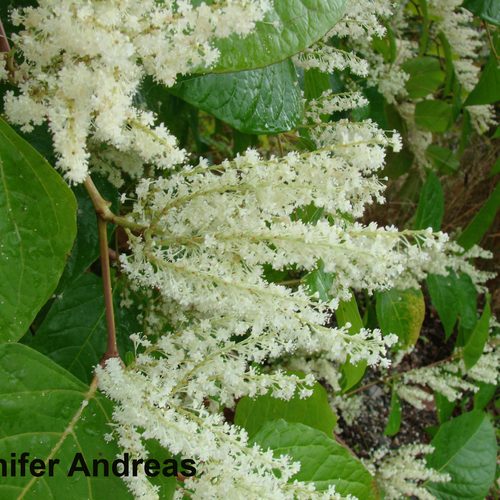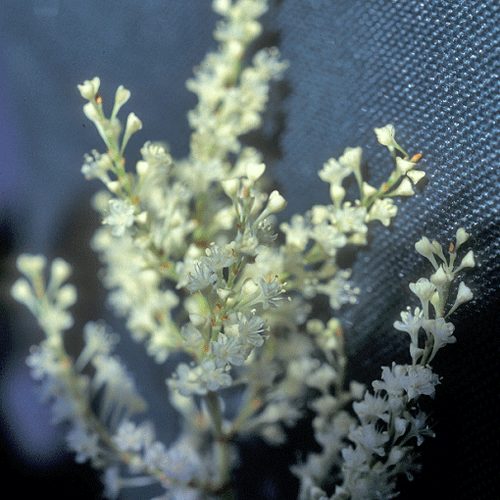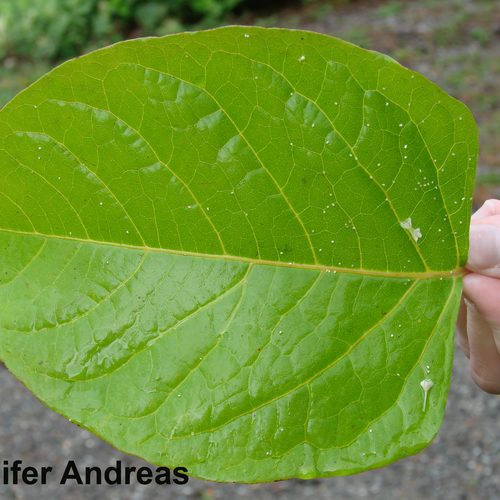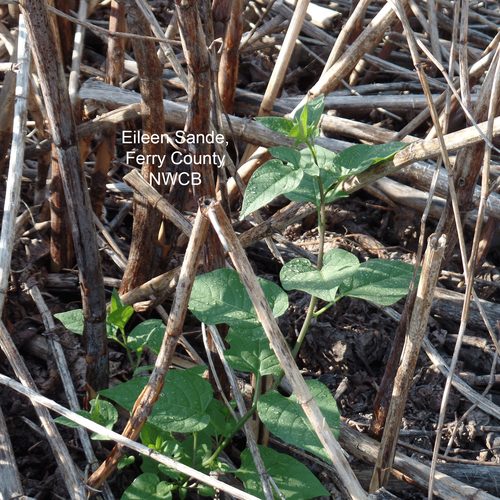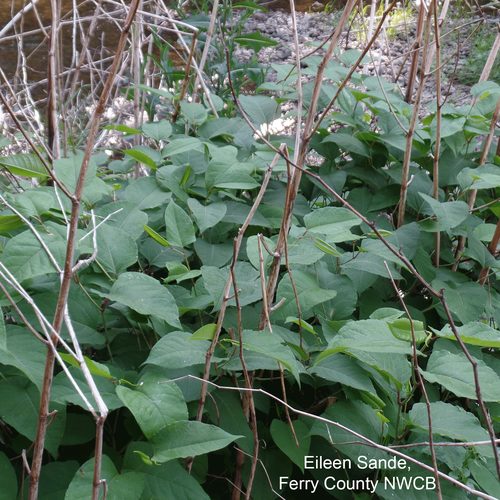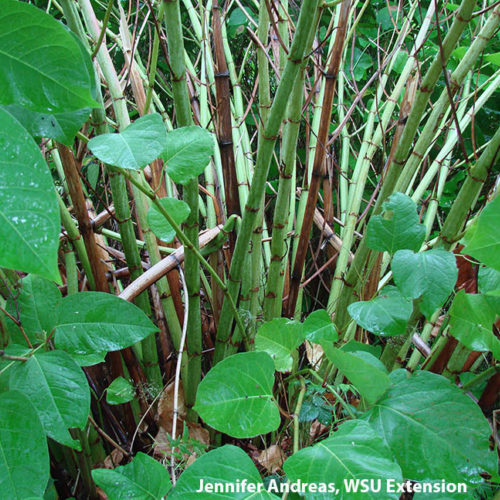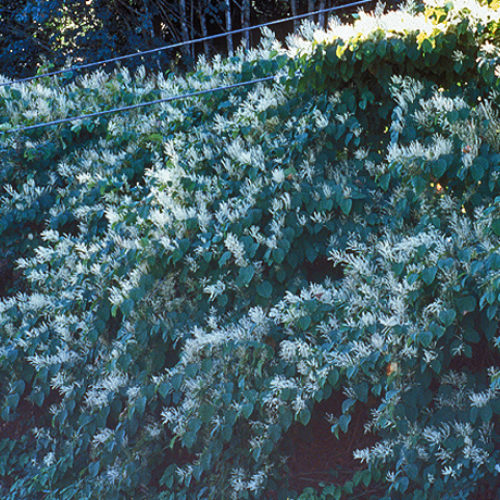Japanese Knotweed
Polygonum cuspidatum
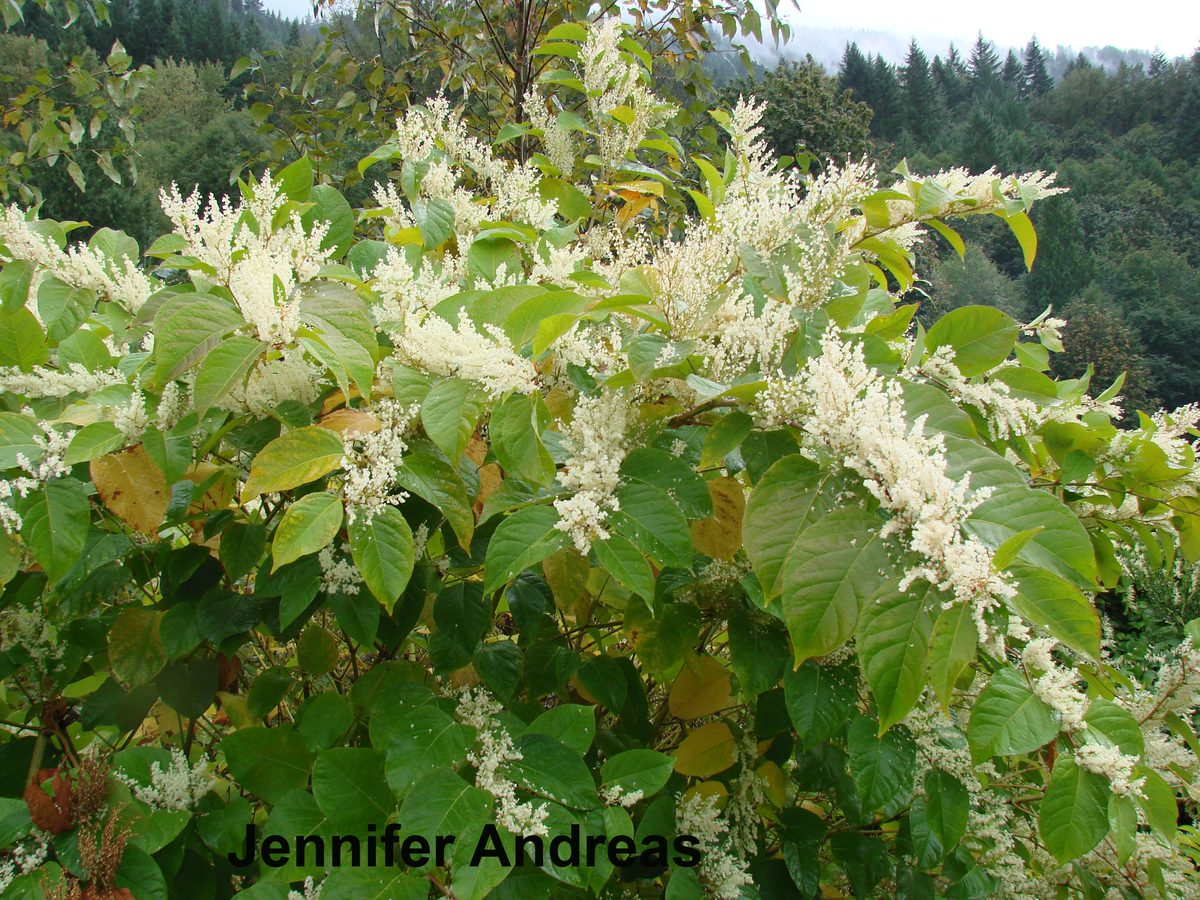
Family: Polygonaceae
Other Scientific Names:
Fallopia japonica, Reynoutria japonica
Weed class: B
Year Listed: 1995
Native to: Asia
Is this Weed Toxic?:
not known to be
Legal listings:
This plant is also on the Washington State quarantine list. It is prohibited to transport, buy, sell, offer for sale, or distribute plants or plant parts of quarantined species into or within the state of Washington or to sell, offer for sale, or distribute seed packets of seed, flower seed blends, or wildflower mixes of quarantined species into or within the state of Washington. Please see WAC 16-752 for more information on the quarantine list. For questions about the quarantine list, contact the Washington State Department of Agriculture's Plant Services Program at (360) 902-1874 or email PlantServices@agr.wa.gov.
Why Is It a Noxious Weed?
It is a very aggressive escaped ornamental that is capable of forming dense stands, crowding out all other vegetation and degrading wildlife habitat. It can also create a fire hazard in the dormant season. It is difficult to control once established.
How would I identify it?
General Description
It is a perennial species with spreading rhizomes and numerous reddish-brown, freely branched stems. Plants can reach 4 to 8 feet in height and is often shrubby.
Flower Description
The whitish to whitish-green flowers are in drooping panicles (clusters) from leaf axils. Male and female flowers are on separate plants.
Leaf description
Leaves are alternately arranged with petioles (stalks) and are 4 to 6 inches long, ovate and have a truncated base and an abrupt tip.
Stem description
Stems are upright, branching and deciduous.
Fruit Seed Description
The fruits are approximately 1/8 inch long, shiny brown and triangular.
May Be Confused With
Knotweed species resemble each other, Japanese knotweed is shorter than Bohemian knotweed or giant knotweed. If you need help with plant identification, please contact your county noxious weed coordinator.
Where does it grow?
It is often found in waste places, gardens, roadsides and stream and riverbanks. Please click here to see a county level distribution map of Japanese knotweed in Washington.
How Does it Reproduce?
It spreads by seed and by long stout rhizomes. Colonies rarely establish from seed.
How Do I Control It?
GENERAL CONTROL STRATEGY
Controlling invasive knotweed species typically takes a number of years and monitoring the site for regrowth is critical. Care must be taken not to produce new plants. All plant material should be removed and properly disposed of as new plants can sprout from very small fragments. Check with your county noxious weed control board about how to best dispose of plant parts. Plants can be dried and burned but make sure to check with local burning restrictions and if any permits are needed.
MECHANICAL CONTROL
Grubbing out small clumps when discovered can prevent new colonies from establishing but is time-consuming. Rhizomes and fragments left in the ground, or nearby, can regenerate and spread infestations. The entire root system must be removed since re-sprouting can occur from rhizomes. Frequent, repeated cutting of plants over many years can eventually kill the plant. Covering plants with a thick landscape fabric for up to 5 years may provide control. Fabric should be installed after cutting plants back to the ground, provide some give in the fabric so new stem growth won't puncture through, monitor fabric and flatten knotweed growth under it, keep fabric cleared of debris, and repair any holes.
BIOLOGICAL CONTROL
There are currently no registered biological control agents for use on any of of invasive knotweed species. Grazing may provide some reduction in plants but additional control methods are typically needed. Any grazing strategy should be carefully controlled to prevent damage in riparian areas.
HERBICIDE CONTROL
Please refer to the PNW Weed Management Handbook, or contact your county noxious weed coordinator.
For More Information
See our Written Findings for more information about Japanese knotweed (Polygonum cuspidatum).
Report on knotweeds from the book "Weed Control in Natural Areas in the Western United States"
Cowlitz County NWCB Fact Sheet on Japanese knotweed
Asotin County NWCB Fact Sheet on Japanese knotweed
Douglas County NWCB Fact Sheet on Japanese knotweed
Clark County NWCB Fact Sheet on Japanese knotweed
Whatcom County NWCB Fact Sheet on Knotweed spp.
Mason County NWCB Fact Sheet on Knotweed spp.
Jefferson County NWCB Fact Sheet on Knotweed spp.
Thurston County NWCB Fact Sheet on Knotweed spp.
King County NWCB Fact Sheet on Knotweed spp.
King County Brochure on Knotweed spp.
Control Options for Japanese knotweed from Lincoln County NWCB
Control options for Knotweed spp. from Whatcom County NWCB
Best Practices for Control of Knotweed spp. from King NWCB



